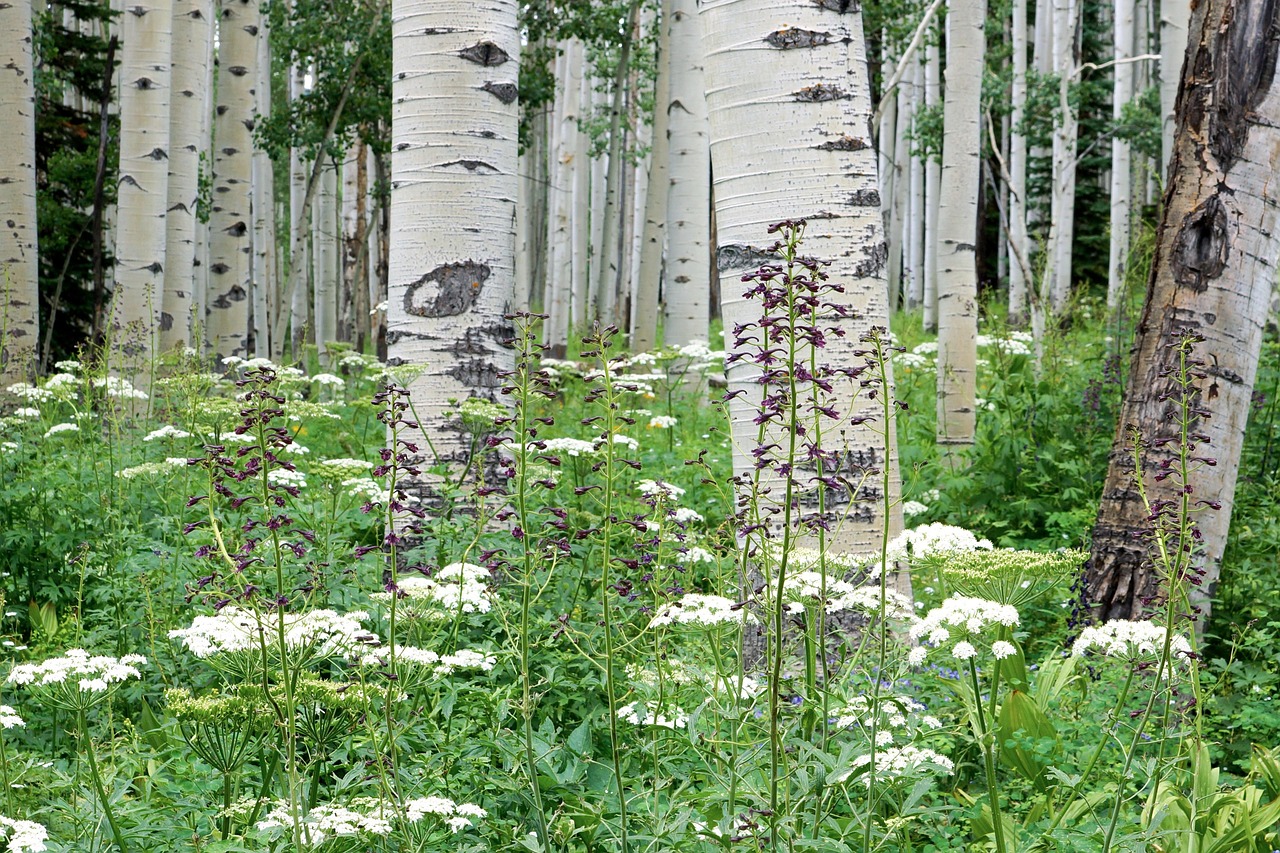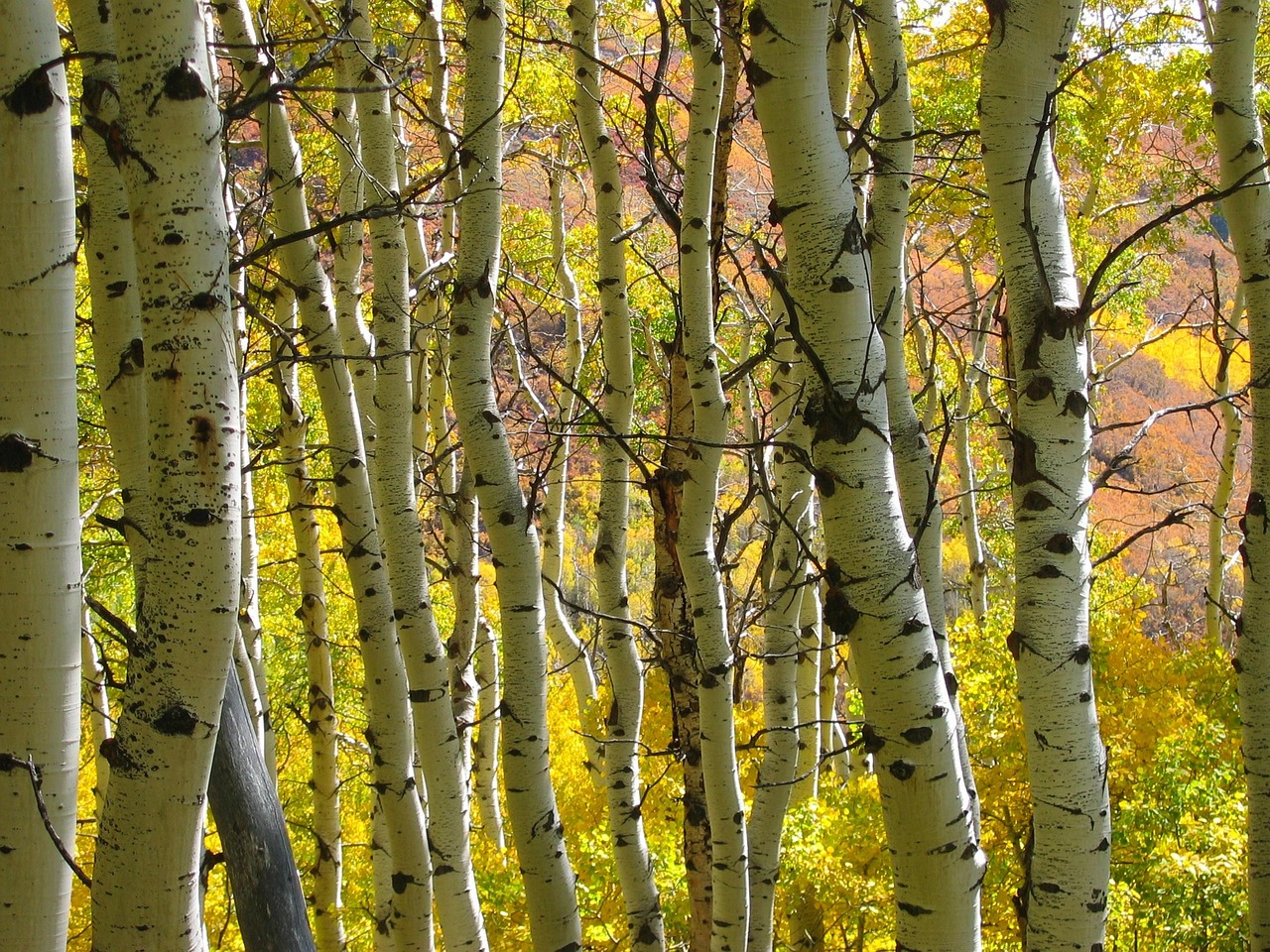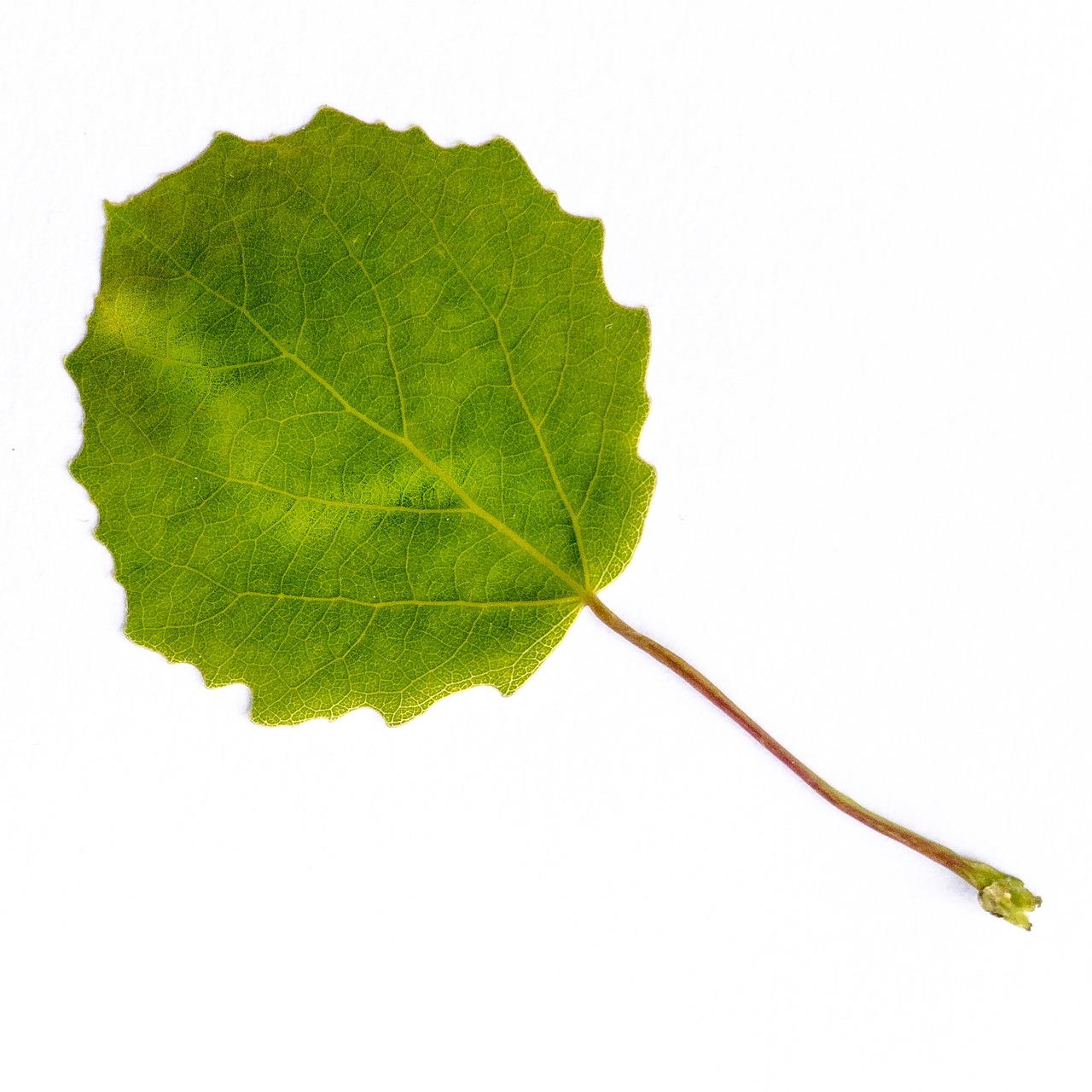The Quaking Aspen, primarily located in the western United States and Canada, thrives in mountainous regions and areas with moist, well-drained soil. It can also be found in parts of Mexico and is known for its distinctive white bark and trembling leaves.
Introduction to Quaking Aspen

The Quaking Aspen (Populus tremuloides) is a unique tree species renowned for its striking appearance and ecological significance. Its name comes from the way its leaves tremble or quake in the slightest breeze, creating a shimmering effect that captivates onlookers. This tree is a member of the willow family and is known for its rapid growth and ability to thrive in various environments.
Quaking Aspens typically grow in clonal colonies, which means they can spread through their root systems. This characteristic allows them to regenerate easily. A single colony can consist of thousands of individual trees that are genetically identical, all connected through an extensive root network. This remarkable feature contributes to the species’ resilience and longevity.
In terms of appearance, Quaking Aspens are characterized by their smooth, white bark, which can sometimes appear greenish in younger trees. The leaves are round to triangular and turn a brilliant yellow in the fall, making them a stunning sight during autumn months. These trees can reach heights of 20 to 80 feet and grow in clusters, often forming beautiful stands that provide habitat for various wildlife.
Geographical Distribution
Quaking Aspens are predominantly found across North America, with a significant concentration in the western regions of the United States. They thrive at elevations ranging from 6,000 to 11,000 feet in mountainous areas. The following states are known for their substantial Quaking Aspen populations:
- Colorado
- Utah
- Wyoming
- Idaho
- Montana
- California
In Canada, Quaking Aspens are widespread as well, especially in the provinces of British Columbia and Alberta. Their growth is influenced by climate and soil conditions. They prefer moist, well-drained soil but are adaptable to various soil types.
Environmental Conditions Favoring Quaking Aspen Growth
Quaking Aspens are often found in areas that experience periodic disturbances, such as wildfires or insect infestations. These disturbances create openings in dense forests, allowing sunlight to reach the forest floor. Consequently, Quaking Aspens take advantage of these conditions to germinate and grow rapidly.
They play an essential role in forest ecosystems by providing food and habitat for numerous species. Animals such as deer, elk, and various birds rely on Quaking Aspens for shelter and sustenance. The trees are also crucial for soil stabilization and preventing erosion, particularly in mountainous regions.
| Characteristic | Description |
|---|---|
| Height | 20 to 80 feet |
| Bark Color | Smooth white to greenish |
| Leaf Shape | Round to triangular |
| Fall Color | Brilliant yellow |
The unique characteristics of Quaking Aspens make them a vital component of the ecosystems they inhabit. Their ability to adapt and thrive in challenging conditions ensures their presence across many different landscapes.
Ecological Importance of Quaking Aspen
Quaking Aspens play a crucial role in their ecosystems. They not only provide habitat and food for a variety of wildlife but also contribute to the overall health of forests. Their presence can influence biodiversity, soil health, and even water cycles. Understanding their ecological significance helps us appreciate the role they play in maintaining a balanced environment.
Wildlife Habitat
Many species depend on Quaking Aspens for habitat and sustenance. The dense stands of these trees create a unique environment that supports various forms of life. Some key wildlife interactions include:
- Bird Species: Numerous bird species, such as woodpeckers, songbirds, and owls, find shelter and nesting sites within the branches of Quaking Aspens. The trees’ bark is also a source of food for some birds that feed on insects.
- Mammals: Animals like deer, elk, and moose browse on the young leaves and bark. These mammals are often seen foraging in areas populated by Quaking Aspens.
- Insects: The trees support a diverse range of insects, including ants, beetles, and butterflies. These insects play a vital role in pollination and serve as food for other wildlife.
Soil Health and Erosion Control
The root systems of Quaking Aspens contribute to soil health and stability. Their extensive network of roots helps bind soil together, which can prevent erosion. This is particularly important in mountainous areas where soil can easily wash away during heavy rains or snowmelt. Additionally, the decomposition of fallen leaves and branches enriches the soil with organic matter, promoting healthy plant growth.
Growth and Reproduction
Quaking Aspens have a unique growth pattern that allows them to thrive in various conditions. They primarily reproduce through two methods: sexual reproduction and vegetative propagation.
Sexual Reproduction
In sexual reproduction, Quaking Aspens produce seeds that are released in the spring. These seeds are lightweight and can be dispersed by wind. However, successful germination depends on suitable environmental conditions, such as adequate moisture and sunlight. Seedlings often struggle to survive due to competition with other plants.
Vegetative Propagation
The more common method of reproduction for Quaking Aspens is vegetative propagation. This occurs when new shoots sprout from the root systems of existing trees. This clonal growth allows Quaking Aspens to quickly establish colonies and dominate areas where they grow.
The ability to propagate vegetatively is advantageous in environments where conditions may not be ideal for seed germination. It enables the trees to spread rapidly, particularly after disturbances like fire or logging, giving them a competitive edge over other species.
Climate Adaptations

Quaking Aspens are well-adapted to a variety of climates, particularly in regions with cold winters and warm summers. They require a specific set of climate conditions to thrive effectively:

- Cold Temperatures: These trees are hardy and can withstand freezing temperatures, making them well-suited for northern latitudes.
- Moisture Availability: While they can tolerate periods of drought, Quaking Aspens prefer locations with adequate moisture. They often grow near streams and rivers where water is abundant.
- Sunlight: Aspens thrive in full sun. Clearings created by natural disturbances allow them to grow rapidly by harnessing direct sunlight.
Understanding these adaptations helps inform conservation efforts. As climate patterns change, monitoring the health and distribution of Quaking Aspens becomes increasingly important to preserve their ecological contributions.
Threats to Quaking Aspen Populations
Despite their adaptability and resilience, Quaking Aspens face several threats that can impact their populations and health. Understanding these threats is essential for conservation efforts aimed at preserving this iconic tree species.
Climate Change
Climate change poses a significant threat to Quaking Aspens. Changes in temperature and precipitation patterns can affect their growth and survival. Some potential impacts include:
- Altered Growth Conditions: Increased temperatures may lead to extended growing seasons, but they can also result in drought conditions that stress the trees.
- Pest and Disease Outbreaks: Warmer temperatures can facilitate the spread of pests and diseases that negatively affect Quaking Aspen health.
- Reduced Snowpack: In regions where snow acts as insulation for roots, reduced snowpack can expose roots to freezing temperatures, leading to damage.
Invasive Species
Invasive plant species can outcompete Quaking Aspens for resources, such as sunlight, water, and nutrients. These invasive plants often thrive in disturbed areas where Quaking Aspens are trying to establish themselves. Some common invasive species that threaten Quaking Aspen habitats include:
- Knotweed: This aggressive plant can quickly dominate the landscape, shading out native vegetation.
- Buckthorn: Buckthorn grows rapidly and can alter soil chemistry, making it difficult for native trees like Quaking Aspen to thrive.
- Cheatgrass: This grass species can invade and disrupt ecosystems, especially after wildfires.
Wildfire Risks
While Quaking Aspens can regenerate after wildfires, the increasing intensity and frequency of wildfires due to climate change can pose a threat. Factors contributing to this issue include:
- Fuel Accumulation: In some areas, a lack of natural fire management leads to an accumulation of fuel, making wildfires more severe.
- Soil Erosion: Following a wildfire, the landscape can become more susceptible to erosion, which can hinder the regrowth of Quaking Aspens.
- Alteration of Ecosystems: Intense fires may alter habitats in ways that make them less suitable for Quaking Aspen regeneration.
Conservation Efforts
To combat the various threats facing Quaking Aspens, several conservation strategies have been implemented. These efforts aim to preserve existing populations and promote healthy growth in new areas.
Monitoring Programs
Many organizations have established monitoring programs to track the health and distribution of Quaking Aspen populations. These programs often involve:
- Tracking Growth Rates: Regular assessments of tree height, health, and density help gauge overall population dynamics.
- Pest and Disease Surveillance: Monitoring for signs of pest infestations or diseases allows for early intervention.
- Mapping Distribution: Geographic Information Systems (GIS) technology is often used to map the distribution of Quaking Aspen populations across different landscapes.
Restoration Projects
Restoration projects are being initiated in areas where Quaking Aspens have declined. These projects typically include:
- Replanting Efforts: Where Quaking Aspens have been lost due to logging or other disturbances, replanting efforts aim to restore these important trees to their former habitats.
- Invasive Species Control: Strategies are employed to manage and reduce the presence of invasive species that threaten native ecosystems.
- Erosion Control Measures: Techniques such as planting cover crops or installing barriers can help stabilize soil in areas where Quaking Aspens are being restored.
Through these efforts, organizations hope to not only protect existing populations but also ensure the long-term sustainability of Quaking Aspens in their native habitats.
Future Considerations for Quaking Aspen Conservation

As we move forward, it becomes increasingly important to consider the future of Quaking Aspens in the face of ongoing environmental challenges. The collaboration between scientists, conservationists, and local communities is crucial for ensuring their survival. Here are some areas that require attention:
Public Awareness and Education
Raising awareness about the ecological importance of Quaking Aspens can foster community support for conservation efforts. Educational programs can focus on:
- Ecological Role: Informing the public about how Quaking Aspens contribute to biodiversity and ecosystem health.
- Threats: Highlighting the various threats that these trees face, including climate change and invasive species.
- Volunteer Opportunities: Encouraging community involvement in restoration projects and monitoring programs to create a sense of stewardship.
Research and Innovation
Ongoing research is essential for understanding the complexities of Quaking Aspen ecosystems. Some areas of focus include:
- Genetic Studies: Exploring genetic diversity within Quaking Aspen populations to enhance resilience against diseases and climate stressors.
- Climate Adaptation Strategies: Developing strategies to help Quaking Aspens adapt to changing climate conditions, such as selecting suitable planting sites based on future climate projections.
- Restoration Techniques: Innovating new methods for effective replanting and habitat restoration that complement natural processes.
Conclusion
Quaking Aspens are not just beautiful trees; they are vital components of their ecosystems, providing habitat, improving soil health, and supporting biodiversity. Their unique adaptations allow them to thrive in a range of conditions, but they are increasingly threatened by climate change, invasive species, and habitat loss. Conservation efforts are underway to monitor and protect these iconic trees through restoration projects, public education, and research.
As we work to preserve Quaking Aspens, it is essential to recognize their significance within the larger context of forest ecology. By fostering awareness and supporting conservation initiatives, we can help ensure that future generations will continue to enjoy the beauty and benefits of Quaking Aspens in their natural habitats. The journey toward sustainable forestry practices and ecological balance will require collaboration and commitment from everyone involved.
The future of Quaking Aspens depends on our collective efforts to safeguard their environments and maintain the delicate balance of the ecosystems they inhabit. Together, we can make a difference in preserving these remarkable trees for years to come.
